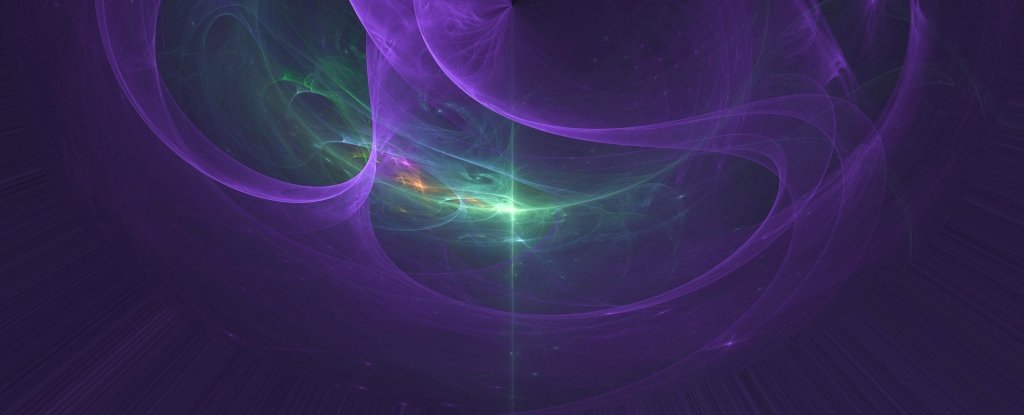From DOE’s Los Alamos National Laboratory (US)
via
13 OCTOBER 2021
MICHELLE STARR

TanyaLovus/iStock/Getty Images Plus.
We now know, to within a tenth of a percent, how long a neutron can survive outside the atomic nucleus before decaying into a proton.
This is the most precise measurement yet of the lifespan of these fundamental particles, representing a more than two-fold improvement over previous measurements. This has implications for our understanding of how the first matter in the Universe was created from a soup of protons and neutrons in the minutes after the Big Bang.
“The process by which a neutron ‘decays’ into a proton – with an emission of a light electron and an almost massless neutrino – is one of the most fascinating processes known to physicists,” said nuclear physicist Daniel Salvat of The Indiana University (US) Bloomington.
“The effort to measure this value very precisely is significant because understanding the precise lifetime of the neutron can shed light on how the universe developed – as well as allow physicists to discover flaws in our model of the subatomic universe that we know exist but nobody has yet been able to find.”
The research was conducted at The Los Alamos National Science Center, where a special experiment is set up just for trying to measure neutron lifespans. It’s called the UCNtau project, and it involves ultra-cold neutrons (UCNs) stored in a magneto-gravitational trap.
The neutrons are cooled almost to absolute zero, and placed in the trap, a bowl-shaped chamber lined with thousands of permanent magnets, which levitate the neutrons, inside a vacuum jacket.
The magnetic field prevents the neutrons from depolarizing and, combined with gravity, keeps the neutrons from escaping. This design allows neutrons to be stored for up to 11 days.
The researchers stored their neutrons in the UCNtau trap for 30 to 90 minutes, then counted the remaining particles after the allotted time. Over the course of repeated experiments, conducted between 2017 and 2019, they counted over 40 million neutrons, obtaining enough statistical data to determine the particles’ lifespan with the greatest precision yet.
This lifespan is around 877.75 ± 0.28 seconds (14 minutes and 38 seconds), according to the researchers’ analysis. The refined measurement can help place important physical constraints on the Universe, including the formation of matter and dark matter.
After the Big Bang, things happened relatively quickly. In the very first moments, the hot, ultra-dense matter that filled the Universe cooled into quarks and electrons; just millionths of a second later, the quarks coalesced into protons and neutrons.
Knowing the lifespan of the neutron can help physicists understand what role, if any, decaying neutrons play in the formation of the mysterious mass in the Universe known as dark matter. This information can also help test the validity of something called the Cabibbo-Kobayashi-Maskawa matrix, which helps explain the behavior of quarks under the Standard Model of physics, the researchers said.
“The underlying model explaining neutron decay involves the quarks changing their identities, but recently improved calculations suggest this process may not occur as previously predicted,” Salvat said.
“Our new measurement of the neutron lifetime will provide an independent assessment to settle this issue, or provide much-searched-for evidence for the discovery of new physics.”
The research has been accepted into Physical Review Letters.
See the full article here .
five-ways-keep-your-child-safe-school-shootings
Please help promote STEM in your local schools.
DOE’s Los Alamos National Laboratory (US) mission is to solve national security challenges through scientific excellence.

DOE’s Los Alamos National Laboratory, a multidisciplinary research institution engaged in strategic science on behalf of national security, is managed by Triad, a public service oriented, national security science organization equally owned by its three founding members: The University of California Texas A&M University (US), Battelle Memorial Institute (Battelle) for the Department of Energy’s National Nuclear Security Administration. Los Alamos enhances national security by ensuring the safety and reliability of the U.S. nuclear stockpile, developing technologies to reduce threats from weapons of mass destruction, and solving problems related to energy, environment, infrastructure, health, and global security concerns.
See the full article here .
five-ways-keep-your-child-safe-school-shootings
Please help promote STEM in your local schools.
DOE’s Los Alamos National Laboratory (US) mission is to solve national security challenges through scientific excellence.

DOE’s Los Alamos National Laboratory, a multidisciplinary research institution engaged in strategic science on behalf of national security, is managed by Triad, a public service oriented, national security science organization equally owned by its three founding members: The University of California Texas A&M University (US), Battelle Memorial Institute (Battelle) for the Department of Energy’s National Nuclear Security Administration. Los Alamos enhances national security by ensuring the safety and reliability of the U.S. nuclear stockpile, developing technologies to reduce threats from weapons of mass destruction, and solving problems related to energy, environment, infrastructure, health, and global security concerns.





